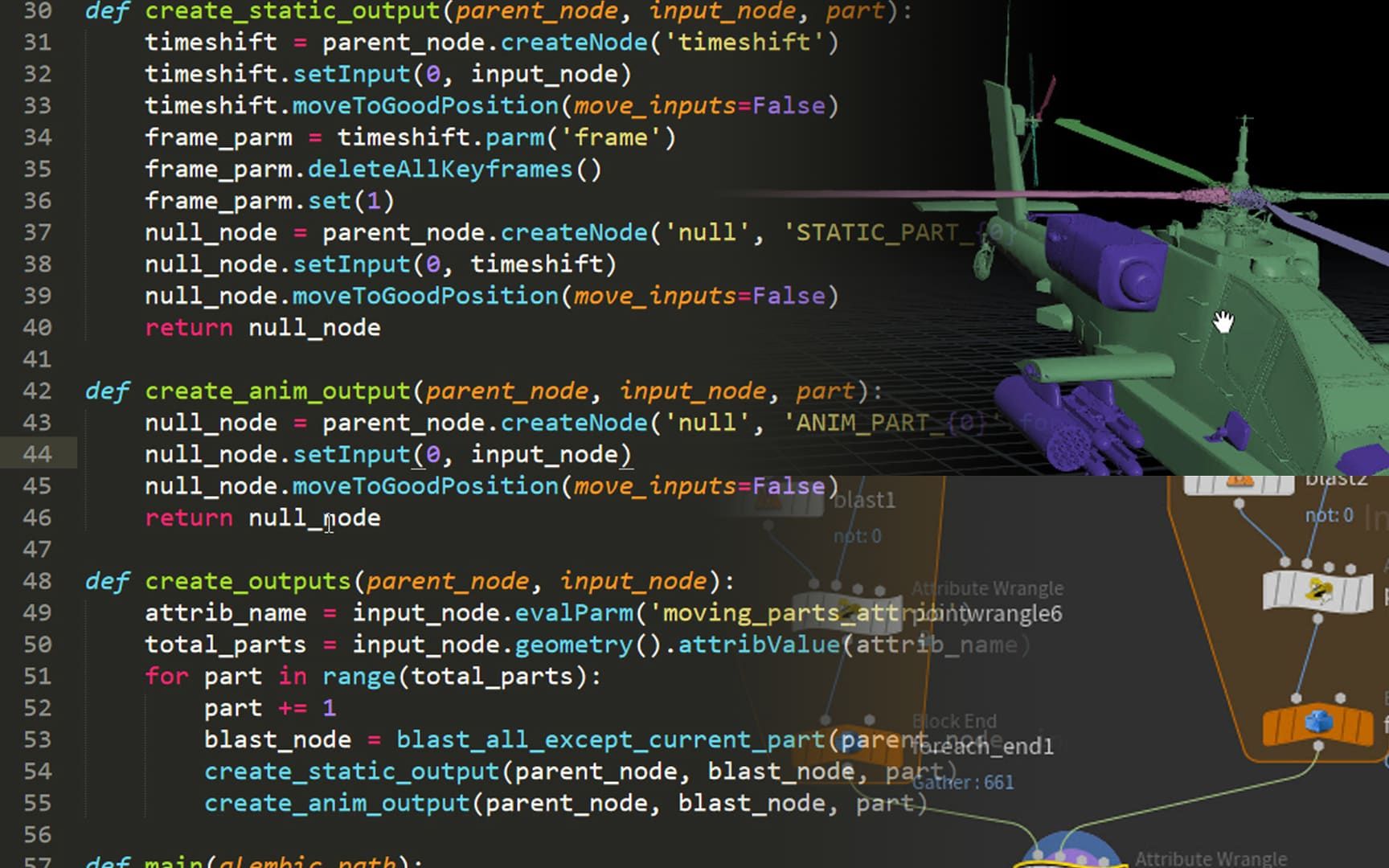

- Accessing frame in houdini vex how to#
- Accessing frame in houdini vex code#
- Accessing frame in houdini vex download#
\$HIP is your working directory, \$OS is the name of your mantra node, \$F4 enumerates the frames by 0001, 0002, … etc. Output Picture: Specify where the files lands.Use resolutions as small as possible for testing. Override Camera Resolution: Good for much faster rendering.Camera: Choose the camera in your scene being used.Valid Frame Range, Start/End/Increment: Specify what frames to render.Use the Render Scheduler tab to cancel render tasks.

This is great for executing large render tasks while working on something else.
Accessing frame in houdini vex how to#
For large render tasks, we will now learn how to use render nodes. We have learned that for single image rendering it is enough to right-click on the render view and “save frame” as a. We can also run a random walk on the banana, darkening every triangle we meet on the path. The result will look like this: Gif is looping forward and backward. The above screenshot of a solver node does the following: Given a banana with large random hue values to it, we average out the hue value at each point with its neighbors. The Prev_Fram node takes the output of the solver node and feeds it back into the solver. The inside of a solver node can look like this: The solver node is like a folder, you double click on it to dive inside and see more nodes. The solver node is the go-to node if you want repeat operations on previous output. What comes next will actually be much more important. The previous section only taught you how to read time in your code.
Accessing frame in houdini vex code#
In your code (inside the Wrangle nodes) Houdini uses the VEX language. On the right, you can edit the settings, where you can edit the “frames per second” count. You then press “play” on the bar to smoothly increase the frame count. This will be very important for making videos. In its settings, you can specify how many frames represent one second. Time in Houdini is controlled using the time bar at the bottom of your screen.
Accessing frame in houdini vex download#
Go into the download folder and get the Tutorial 03 folder! We will also learn how to make cool videos from this 🍌. We will create and animate and destroy geometry at our will. In this Tutorial we will become geometry gods.


 0 kommentar(er)
0 kommentar(er)
